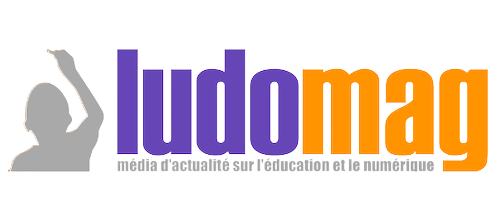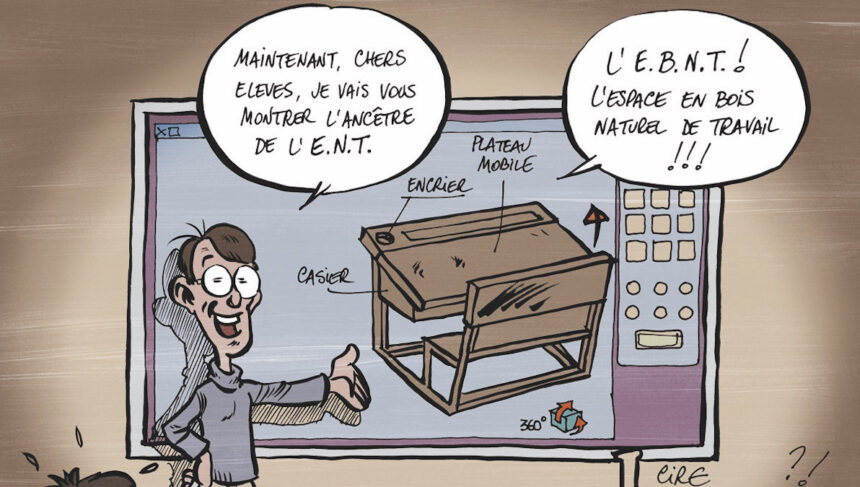What a big topic Learning Management Systems (LMS) are celebrating their 20th anniversary! In an interview at Educatech Expo, Marie Deroide, former LMS project manager from 2009 to 2013 and currently head of the Digital Tools and Services for Education office at the Directorate of Digital Education, takes us through two decades of digital workspaces that were created in 2003.
The period from 2003 to 2009, when Marie Deroide joined the teams of the Directorate for Digital Education (DNE) within the department responsible for the LMS, marked the era of project calls launched by the State and the Caisse des dépôts. These two national partners financed experiments carried out by local authorities in collaboration with academic institutions.
2003-2009: The period of building learning management systems
« The two calls for projects launched in 2003 and 2005 were quite successful in the regions and most of these projects went on to the generalisation phase » explains Marie Deroide.
In 2006, the Digital Workplaces Master Plan (SDET) was launched, initially shared with higher education. However, a split later occurred because the organisational context and needs between secondary and higher education proved to be too different.
This document, the SDET, has since been regularly updated (see the June 2022 version here).
This national reference framework still exists and supports projects. While the level of enthusiasm and the industrial solution chosen may vary from one region to another, the level of service offered to the educational community should be almost identical. The SDET makes this possible.
For me, what marks the end of this period is the circular relating to the class register, a memory from the 2009-2010 academic year that « buried » the paper class register and approved the digital class register, the backbone of the Learning Management Systems.
After the construction phase, the focus shifted to generalisation in 2010
The first major region to start the generalisation process was Alsace, starting with the academy in Strasbourg, followed by the academy in Toulouse. « From 2010 onwards, there was a strong commitment from the local authorities, who wanted to offer a service to parents and equip educational missions » explains Marie Deroide.
On the parents’ side, there was indeed a very strong commitment, sometimes even before teachers had fully integrated it into their practices.
She points out that during this period, local authorities, particularly secondary school departments and regions, invested heavily in Learning Management Systems (LMS) and network infrastructures to access the services.
Then came the COVID-19 pandemic
The COVID-19 period, especially the various lockdowns, highlighted the real added value of the LMS. It brought new users into the system, « especially on the teachers’ side » notes Marie Deroide. « And many of them have stayed on since then » she adds.
The audience measurement tool, DNMA, has been collecting quantitative data on the use of the LMS almost since its inception, covering the entire territory with standardised and comparable indicators.
« From a research and tracking perspective, this tool is really interesting » she explains.
In particular, the DNMA shows the strong support of parents during the generalisation of the LMS between 2009 and 2019. Then, with the advent of COVID-19, there was a massive influx of teachers who needed to ensure pedagogical continuity and « who saw the interest in certain tools that they had not necessarily used before, such as shared tools, online lockers, thus focusing on more pedagogical aspects, » she specifies.
The LMS, now almost indispensable in secondary education. Did it « spawn » in our nursery and primary schools?
Today, there is still a significant gap between primary and secondary education in the development of Learning Management Systems (LMS). « This is mainly related to the number of municipalities involved in the implementation of LMS in primary education and the very significant disparities that exist between them« .
On the other hand, what is currently noteworthy and facilitates the arrival of LMS in primary education is the consolidation within a department or region, « which allows the benefits of a contractual and technological environment with publishers offering a complete solution » stresses Marie Deroide.
The arrival of digital resources in the LMS: a real paradigm shift
In 2010, the debates about the weight of schoolbags seemed endless, with digital textbooks struggling to replace paper textbooks and notebooks, and the additional burden of « devices » often carried by students, a kind of « digital » solution that did not solve the problem of the weight of schoolbags.
Today, progress is undeniable, especially in high schools, with the transition to « all-digital », where students no longer have paper textbooks.
« This has been made possible by renewed investment by local authorities, particularly visible in regions that have invested on all three fronts: infrastructure, equipment and digital services and resources » notes Marie Deroide.
On the Ministry’s side, the GAR (Access Manager to Resources) has been implemented, which increases the trust space of the LMS and simplifies the user’s path to access resources.
« It is an intermediary that sends the right data to the right actors, and it is a massive project of interoperability and standardisation of exchanges between different actors » she explains.
And she adds: « Let’s say that the GAR changed things profoundly and marked the beginning of the profound evolution of LMS with a dynamic of openness« .
Where do we go from here?
Today, local authorities claim that it is not possible to do without the Learning Management System (LMS) in educational institutions, as it becomes their digital extension.
« What will change is the increasing interoperability of LMSs and also of service providers, who must be able to exchange data. We are entering the era of open data, of data consumption by authorised actors » expresses Marie Deroide.
« In 2023, we produced version 1 of a document called ‘Technical Doctrine of Digital Education’, which frames all digital educational services, not just LMS, despite their dominant role in the ecosystem.«
So Learning Management Systems still have many years ahead of them, with the definite aim of « breaking down barriers » in order to facilitate the secure and easy exchange of data « to achieve the same objective, namely an optimal user experience« , concludes Marie Deroide.
Further information: eduscol.education.fr








